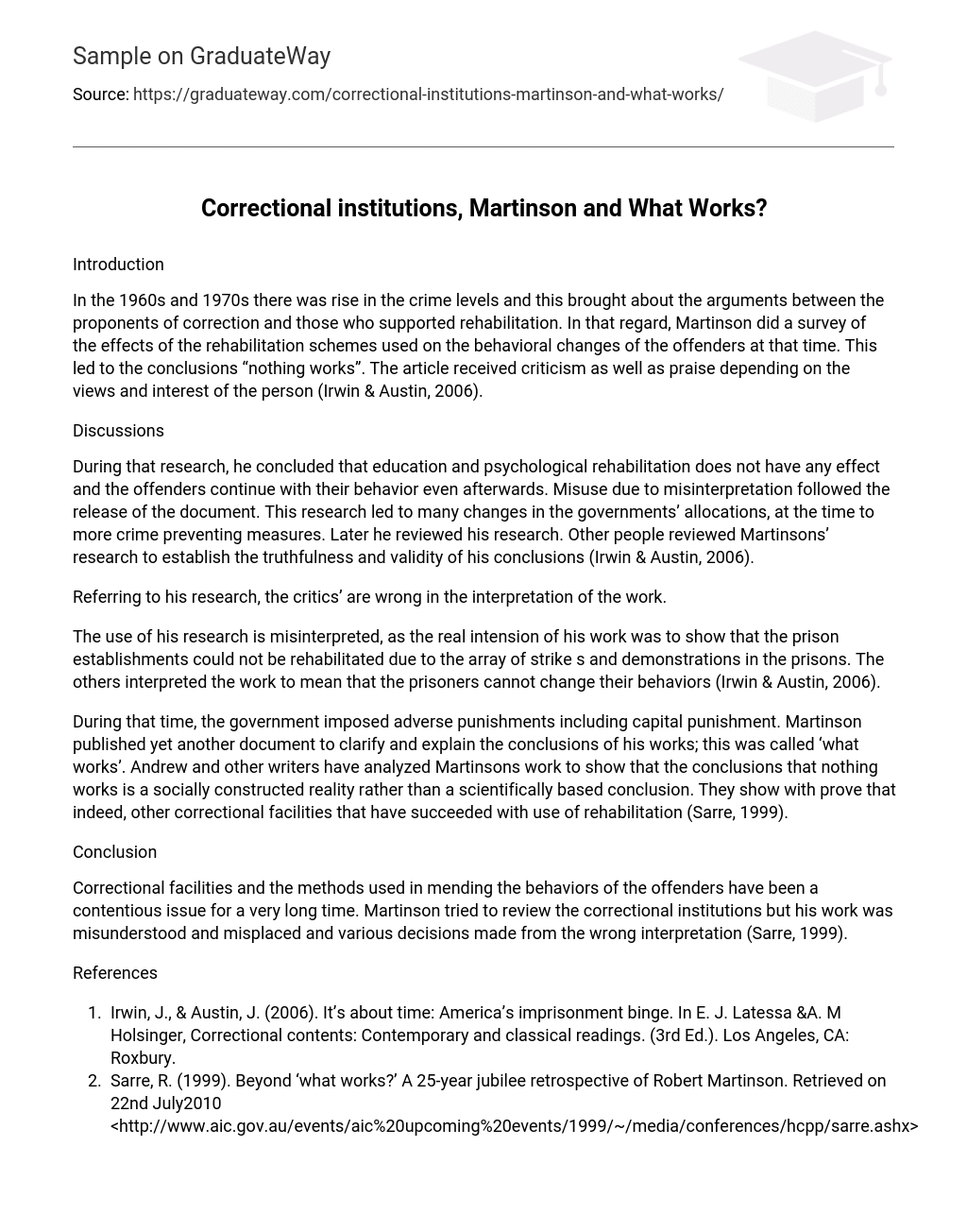Introduction
In the 1960s and 1970s there was rise in the crime levels and this brought about the arguments between the proponents of correction and those who supported rehabilitation. In that regard, Martinson did a survey of the effects of the rehabilitation schemes used on the behavioral changes of the offenders at that time. This led to the conclusions “nothing works”. The article received criticism as well as praise depending on the views and interest of the person (Irwin & Austin, 2006).
Discussions
During that research, he concluded that education and psychological rehabilitation does not have any effect and the offenders continue with their behavior even afterwards. Misuse due to misinterpretation followed the release of the document. This research led to many changes in the governments’ allocations, at the time to more crime preventing measures. Later he reviewed his research. Other people reviewed Martinsons’ research to establish the truthfulness and validity of his conclusions (Irwin & Austin, 2006).
Referring to his research, the critics’ are wrong in the interpretation of the work.
The use of his research is misinterpreted, as the real intension of his work was to show that the prison establishments could not be rehabilitated due to the array of strike s and demonstrations in the prisons. The others interpreted the work to mean that the prisoners cannot change their behaviors (Irwin & Austin, 2006).
During that time, the government imposed adverse punishments including capital punishment. Martinson published yet another document to clarify and explain the conclusions of his works; this was called ‘what works’. Andrew and other writers have analyzed Martinsons work to show that the conclusions that nothing works is a socially constructed reality rather than a scientifically based conclusion. They show with prove that indeed, other correctional facilities that have succeeded with use of rehabilitation (Sarre, 1999).
Conclusion
Correctional facilities and the methods used in mending the behaviors of the offenders have been a contentious issue for a very long time. Martinson tried to review the correctional institutions but his work was misunderstood and misplaced and various decisions made from the wrong interpretation (Sarre, 1999).
References
- Irwin, J., & Austin, J. (2006). It’s about time: America’s imprisonment binge. In E. J. Latessa &A. M Holsinger, Correctional contents: Contemporary and classical readings. (3rd Ed.). Los Angeles, CA: Roxbury.
- Sarre, R. (1999). Beyond ‘what works?’ A 25-year jubilee retrospective of Robert Martinson. Retrieved on 22nd July2010 <http://www.aic.gov.au/events/aic%20upcoming%20events/1999/~/media/conferences/hcpp/sarre.ashx>





